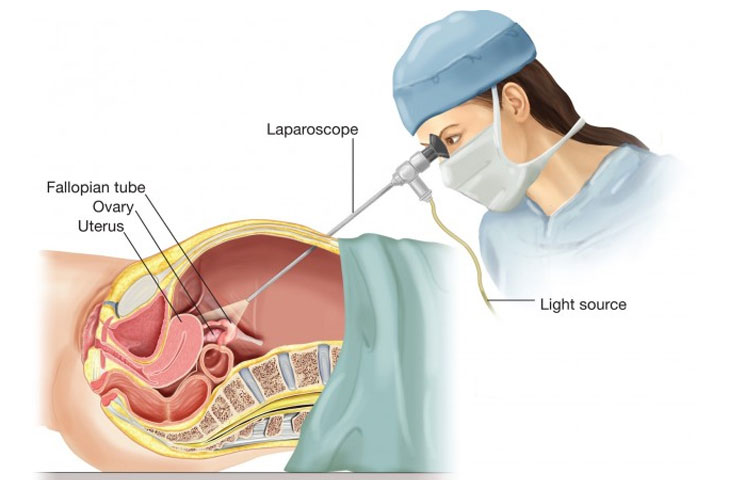Diagnostic Laparoscopy
What Is Diagnostic Laparoscopy?
A laparoscope is a telescope designed for medical use. It is connected to a high intensity light and a high-resolution monitor. In order for the surgeon to see inside your abdomen, a hollow tube (port) is placed through your abdominal wall, and the laparoscope is inserted into the port. The image of the inside of your abdomen is then seen on the monitor. In most cases, this procedure (operation) will be able to diagnose or help discover what the abdominal problem is.
Why Is Diagnostic Laparoscopy Performed?
Abdominal pain.
Laparoscopy has a role in the diagnosis of both acute and chronic abdominal pain. There are many causes of abdominal pain. Some of these causes include appendicitis, adhesions or intra-abdominal scar tissue, pelvic infections, endometriosis, abdominal bleeding and, less frequently, cancer. It is used in patients with irritable bowel disease to exclude other causes of abdominal pain. Surgeons can often diagnose the cause of the abdominal pain and, during the same procedure, correct the problem.
Abdominal mass.
A patient may have a lump (mass or tumor), which can be felt by the doctor, the patient, or seen on an X-ray. Most masses require a definitive diagnosis before appropriate therapy or treatment can be recommended. Laparoscopy is one of the techniques available to your physician to look directly at the mass and obtain tissue to discover the diagnosis.
Ascites.
The presence of fluid in the abdominal cavity is called ascites. Sometimes the cause of this fluid accumulation cannot be found without looking into the abdominal cavity, which can often be accomplished with laparoscopy.
Liver disease.
Non-invasive imaging techniques such as ultrasound, CT scan (computed tomography) and MRI (magnetic resonance imaging) may discover a mass inside or on the surface of the liver. If non-invasive imaging cannot give your physician enough information, a liver biopsy may be needed to establish the diagnosis. Diagnostic laparoscopy is one of the safest and most accurate ways to obtain tissue for diagnosis. In other words, it is an accurate way to collect a biopsy to sample the liver or mass without actually opening the abdomen.
"Second look" procedure or cancer staging.
Your doctor may need information regarding the status of a previously treated disease, such as cancer. This may occur after treatment with some forms of chemotherapy or before more chemotherapy is started. Also, information may be provided by diagnostic laparoscopy before planning a formal exploration of the abdomen, chemotherapy or radiation therapy.
Other.
There are other reasons to undergo a diagnostic laparoscopy, which cannot all be listed here. This should be reviewed and discussed with your surgeon.

